The Exquisite & Complex Glashütte Original PanoMaticCalendar
A new complication for the brand, executed with ingenuity and superb elegance.
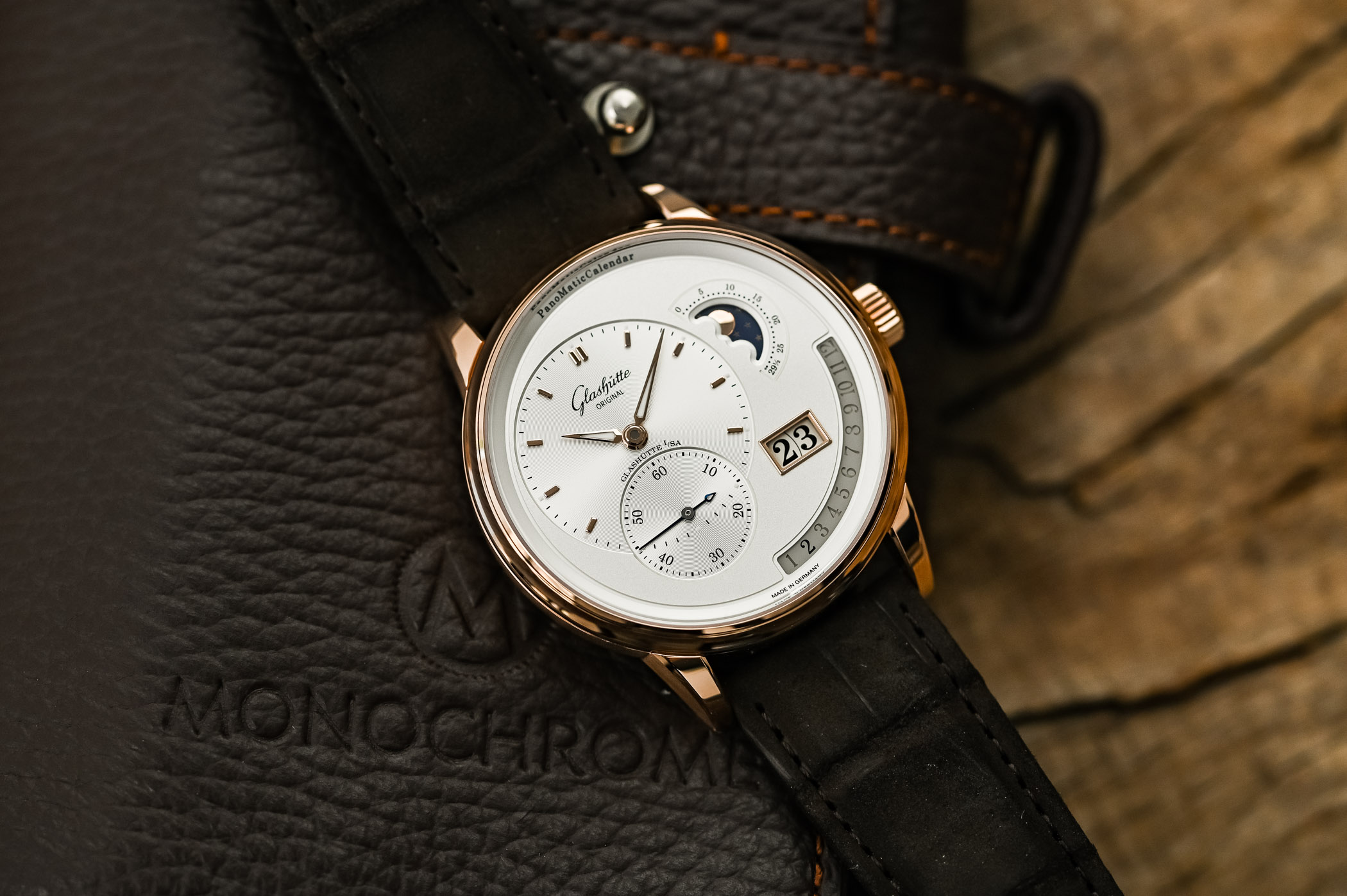
Probably the most emblematic and distinctive range of watches produced by the Saxon manufacture, the Pano collection has seen many different complications – power reserve, moon phase, retrograde chronograph or inverted movement to name a few – but never before the brand worked on a calendar watch. Things have changed recently, as Glashütte Original released the PanoMaticCalendar. And not only this watch features a new display and a new movement, but it’s also the first-ever annual calendar of the brand – and this is a complication we’ve always deeply appreciated here, at MONOCHROME. It’s time now for us to have a closer look at this elegant, complex yet surprisingly discreet new PanoMaticCalendar, in its non-limited red gold edition.
The best of mechanical ingenuity, the annual calendar
Before we go into the details about the PanoMaticCalendar, let’s dive into some technical reminders, specifically concerning the annual calendar. Calendar watches can take multiple shapes. Without going into the details about how to display a date – whether thanks to a window, a central hand or a subdial with a so-called pointer date feature – let’s categorize things a bit. The most common complication of a watch (anything in addition to the display of the time) is the date, which represents the first step into calendar watches.
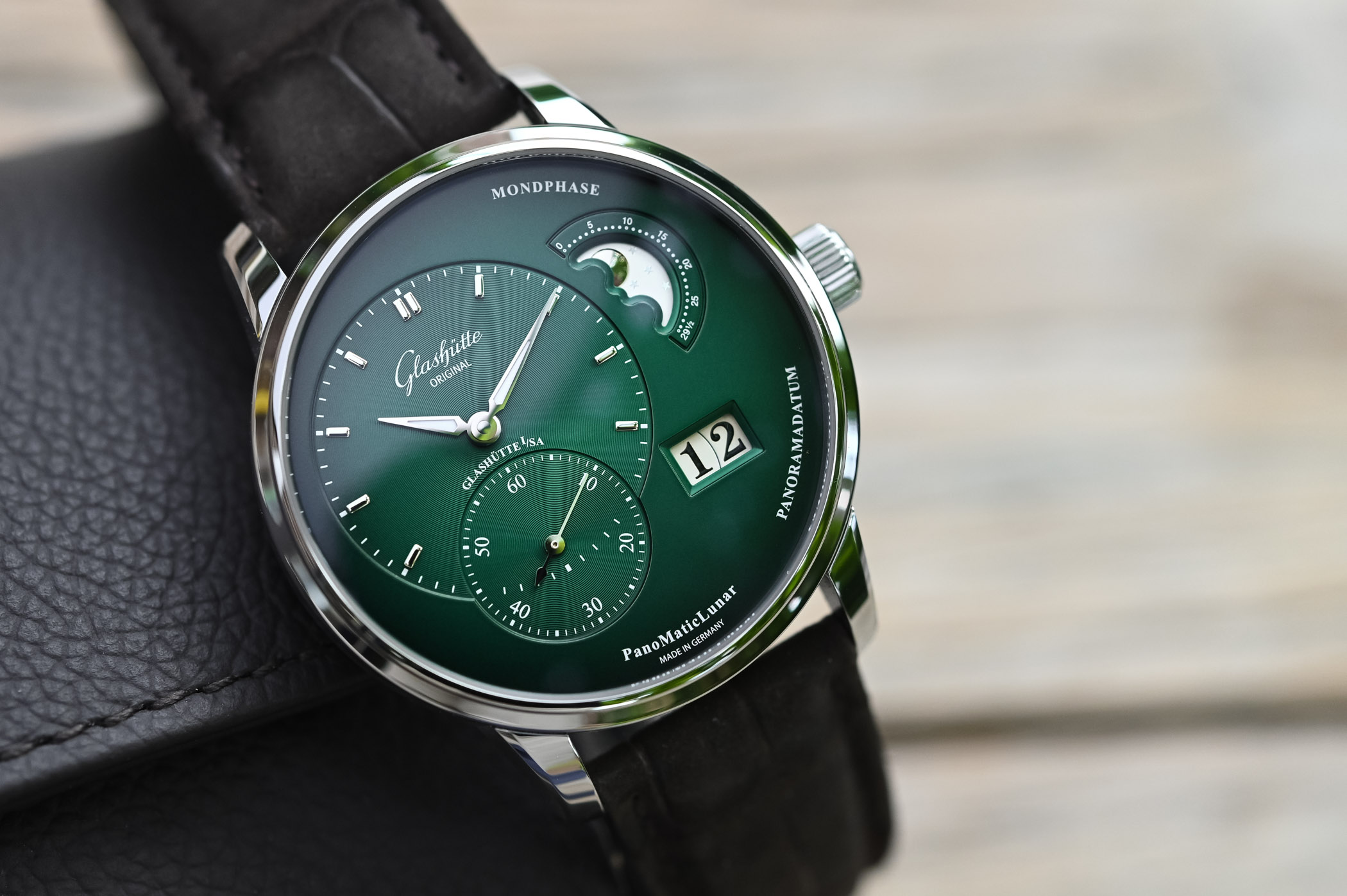
The second step is the day-date, which only adds the indication of the day of the week, without much mechanical wonder behind it. Proper calendar watches often start with the so-called complete, full or triple calendar watches – all covering the exact same complication (and if you want to increase your French knowledge, these watches are called quantième complet). These watches, often by the mean of a pointer date and two windows, display the date, the day of the week and the month. There’s nothing truly complex in these watches, which require adjustments on all months with less than 31 days (February, April, June, September, November).
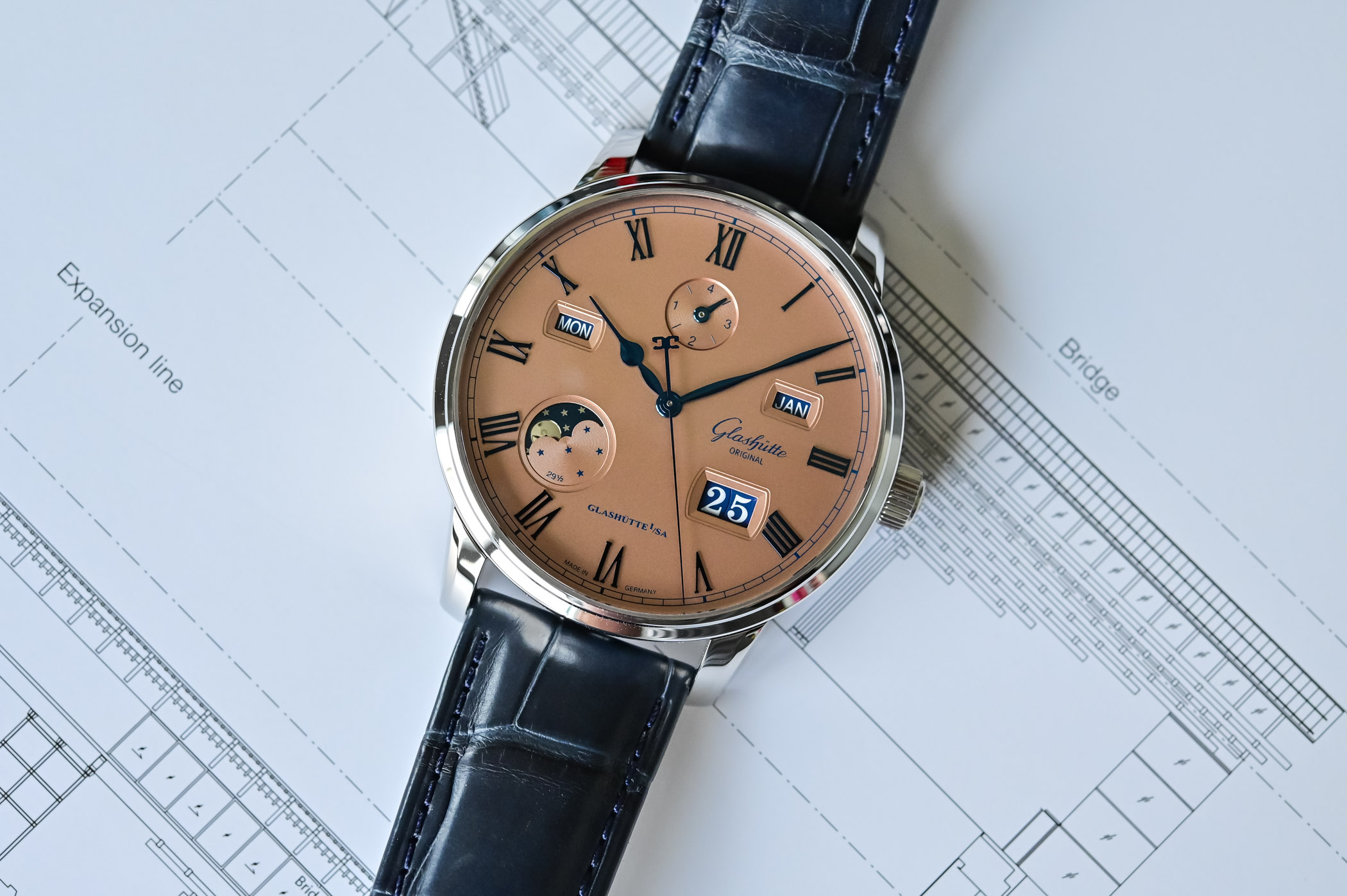
On the other side of the spectrum is the perpetual calendar or calendrier perpétuel, a complex, often fragile and time-consuming kind of watch that has the capacity to automatically adjust the date depending on the length of the month, even in February, whether it has 28 or 29 days when leap years occur. These watches only require one adjustment per 100 years, during so-called secular years (an exception to the rule of the leap year). And even in that case, some rare watches have been invented with secular calendars.

Finally comes the intermediate type of watches, the annual calendars or calendriers annuels. Just like the complete and perpetual calendar watches, annual calendars often display the date and month (also the day of the week in some of them) but only necessitate one correction a year. An annual calendar automatically adjusts the date displayed, based on the different lengths of the month and requires to be corrected manually at the end of February. It otherwise takes into account the months with 30 or 31 days.
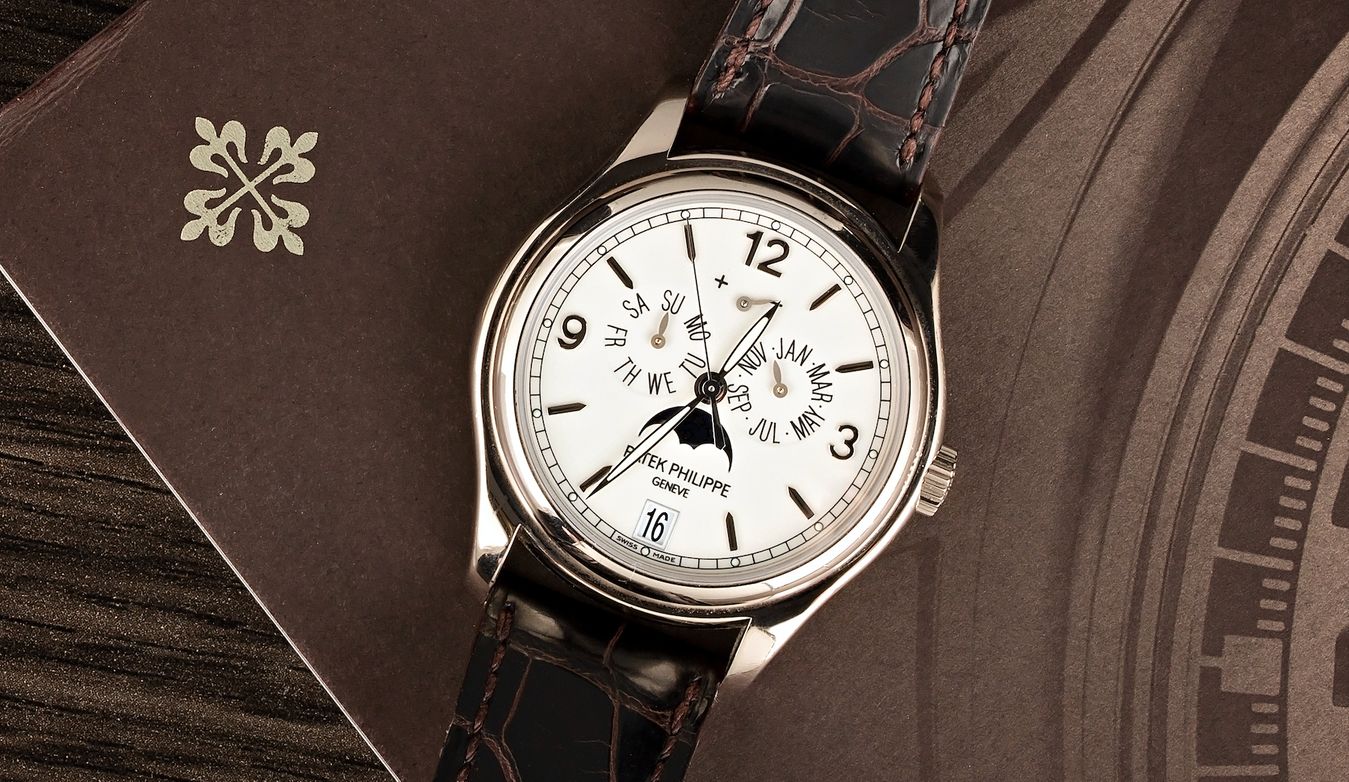
The annual calendar is a rather young complication, invented and patented by Patek Philippe in 1996, within its reference 5035. Annual calendars have many advantages. While not compromising much on functionality and mechanical beauty compared to a perpetual calendar, an annual calendar is less complex in terms of watchmaking needs, meaning easier to conceive, easier to assemble and also less fragile as the movements are secured and require fewer parts. Another consequence is that annual calendar watches tend to be more accessible.
Glashütte Original’s take on the complication, the PanoMaticCalendar
With the PanoMaticCalendar, Glashütte Original raises the bar on two levels. First of all, we’re looking at the first proper calendar watch within the Pano collection – all previous models had a Panorama Date, but no calendar per se. Second, it’s the first annual calendar of the brand. And all of that comes with a brand new movement… and one that has quite strong arguments under its beautifully designed and decorated bridges.
Let’s first talk about design and display, a topic of great importance when it comes to the Pano collection. First of all, note that the PanoMaticCalendar has been released in two versions; the present, non-limited red gold model with a closed dial, and a platinum limited edition with an openworked dial. In all subjectivity, I have a preference for the classic edition, with its more elegant and subtle look. But let’s move on, shall we? One of the main distinctive elements of the Pano collection lies in the layout of its dial. All models rely on this specific combination of overlapping elements on the left, and additional indications on the right, so the complications never interfere with the display of the time and are highlighted in an area of the dial where watchmakers can play with their creativity.
The base of these watches is an 8-shaped indication of the time that occupies about 2/3 of the space, with hours and minutes on top, and an interlacing small seconds below it that slightly crosses over – but legibility is still at the centre of the brand’s preoccupation, with continuous tracks for the minutes/hours and the seconds. The right side of these watches is dedicated to additional features. A large date, a moonphase, a power reserve or a surprising chronograph counter have already been seen there.
The beauty of the Glashütte Original PanoMaticCalendar is that it remains entirely faithful to this layout, despite having to house more indications than usual. The basics of this watch can be seen within the PanoMaticLunar, with an identical position for the moonphase indicator and the signature Panorama Date – which is one of the best on the market, as it relies on two concentric discs that do not overlap, so the two numerals are always on the same horizontal plane, resulting in undisputed readability and visual elegance. In the same vein, the moon indication takes place at 2 o’clock, just like the PanoMaticLunar, with a blue disc and gold moon.
And then comes the clever integration of the calendar. Benefitting from an enlarged case and thus more space on its dial, the Glashütte Original PanoMaticCalendar comes with one of the sleekest and best integrated annual calendar functions I’ve recently seen. While many watches rely on a subdial with 12 markers or a window with the current month, GO’s solution is elegant, graphic, clever and, because we’re talking Pano, beautifully off-centred. An arched window that occupies one-fourth of the watch (from 3 to 6 o’clock) lets you see 12 numerals, for the 12 months that compose a year.
This arched sapphire, partially translucent window almost matches the dial in colour. Underneath is a disc (which performs a complete rotation in 4 years) with 4 small black markers that highlight the current month, in a discreet and yet legible way. In all fairness, if I would have been asked to design an annual calendar on a Pano watch, I can’t see what better solution I could have come up with… Respect to the brand for the design of this display, it is close to perfection.
We’ve spent quite some time on the layout of this PanoMaticCalendar, but there are many more things to explore. First of all, if this model seems like an evolution of the PanoMaticLunar, it doesn’t share much with this watch. The case, here presented in 18k red gold (no words regarding a steel version yet), now measures 42mm in diameter, compared to 40mm for the PML. Still, thickness hasn’t changed, with 12.4mm, resulting in fairly balanced proportions and a watch with wrist presence. It isn’t a piece you can consider as a dress watch, but the Panos have never been playing in this field anyway. The case is finished with alternating brushed and polished surfaces and has a decent water-resistance of 50 metres.
The dial of the Glashütte Original PanoMaticCalendar in red gold is all about the classic codes of the brand, with a silver-opaline, slightly iridescent texture that is both warm and discreet. The subdial for the hours and minutes, as well as the small seconds, have a concentric stamped “vinyl disc” pattern and are equipped with small applied hour markers and luminous rectangles. Dauphine gold lume-filled hands show the hours and minutes, while the small seconds rely on a blued steel baton hand. The Panorama Date is also framed by a golden metallic element, adding depth and contrast. Also, GO had a good idea to simplify its dial by removing some written indications (on the PanoMaticLunar there were written mentions for the “MondPhase” and the “PanoramaDatum” in addition to the name of the watch).
The PanoMaticCalendar in red gold is worn on a brown and quite pleasant nubuck-like alligator strap in dark brown. It can be ordered either on a pin buckle (ref. 1-92-09-02-05-02) or a butterfly-shaped folding clasp (ref. 1-92-09-02-05-62). Being 42mm in diameter and made out of gold, it is a rather sizeable and heavy watch on the wrist, but short and angled lugs help to bring comfort and balance.
A new in-house movement
The PanoMaticCalendar is not just a new complication added to an existing movement, it actually features a new movement inside, of course, conceived and manufactured in-house, in Glashütte. This new calibre 92-09 appears first as being the same movement that powers the PanoMaticLunar. While it surely shares some elements, like its automatic winding system, some of its regulation and gear train calculations, it also comes with multiple important upgrades.
The basic architecture of this self-winding movement (preferable for a calendar watch) is typical of Glashütte Original with a 3/4 plate (a signature element of the German school of watchmaking) and an off-centred rotor with double-G logo and 21k gold mass. Regulation is done, among other parts, by a handsome and technically complex double swan-neck fine adjustment, positioned above a hand-engraved balance cock. But there are some new features, the first being the silicon hairspring. Anti-magnetic and lubrication free, this allows for more longevity. Also important, the power reserve has been drastically increased, with now 100h of energy (more than double that of a PML).
The movement is secured in the case with a bayonet mounting, which ensures effective shock and impact resistance. The decoration of the movement is above suspicion, with thin ribbings, thermally blued screws, perlage, polished steel parts and bevelled edges. Finally, the calendar indications are adjusted by the crown, except for the moonphase that relies on a small recessed pusher in the caseband.
Availability & Price
The Glashütte Original PanoMaticCalendar in 18k red gold is now available from boutiques and retailers and is part of the permanent collection. It retails for EUR 27,900 on a pin buckle or EUR 30,200 on a folding clasp, which is objectively a lot of money, but still rather attractive for a high-quality, mechanically advanced annual calendar in gold… It’s still quite a lot less than a rose gold Rolex Sky-Dweller on rubber strap or an ALS 1815 Annual Calendar, and about the same as a gold Omega Globemaster Annual Calendar or an IWC Portugieser Annual Calendar.
For more details, please visit www.glashuette-original.com.

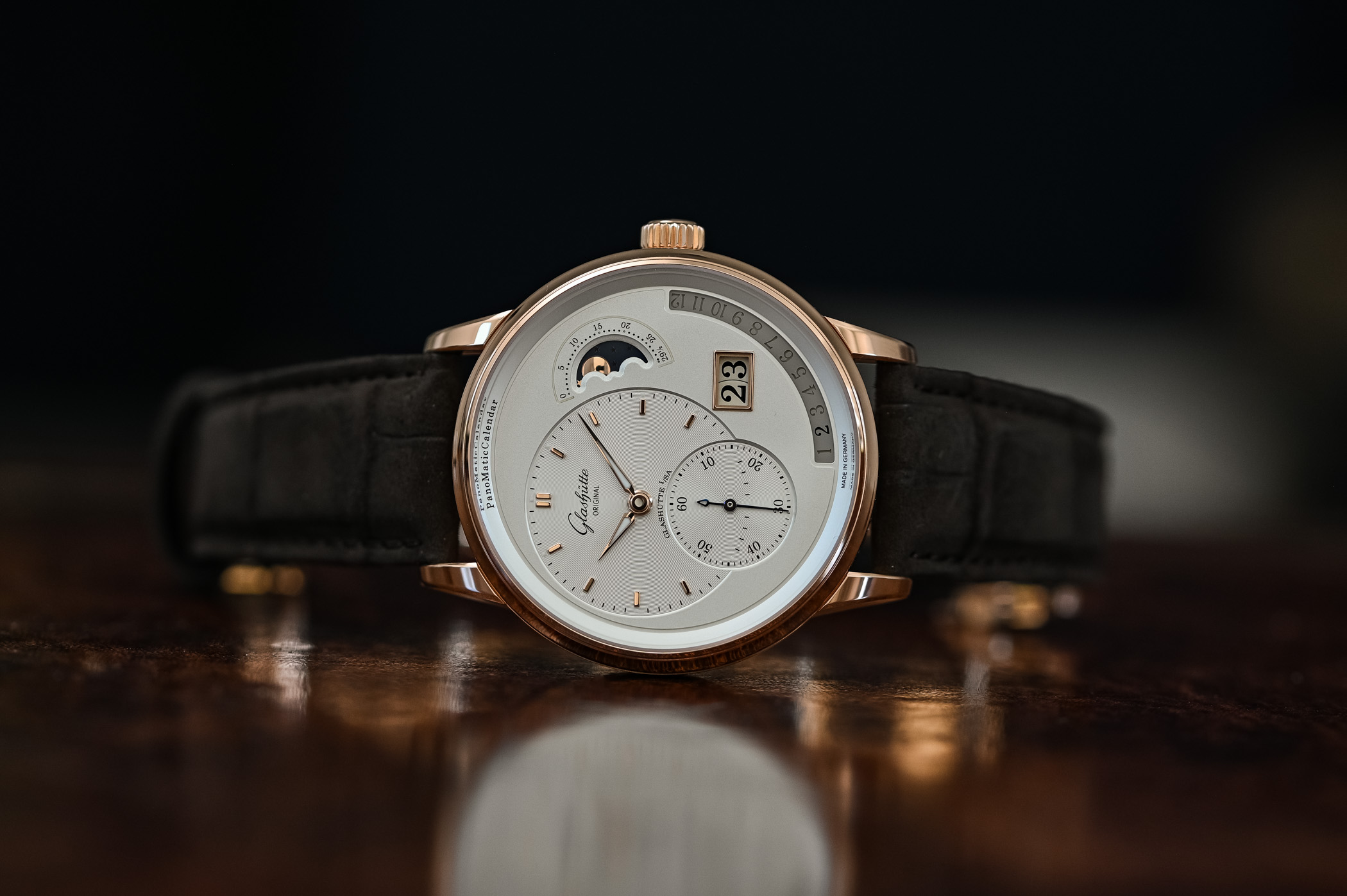
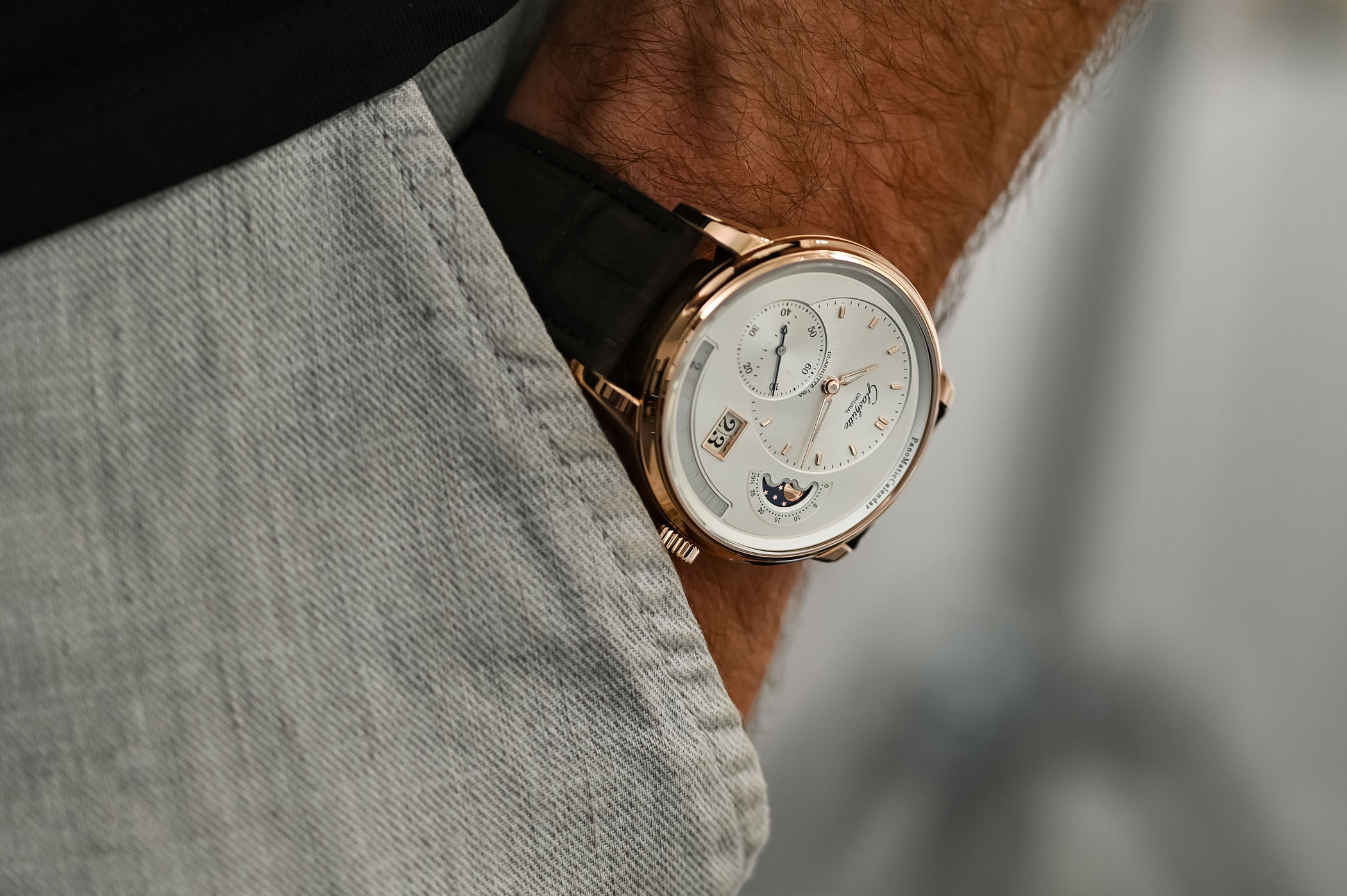
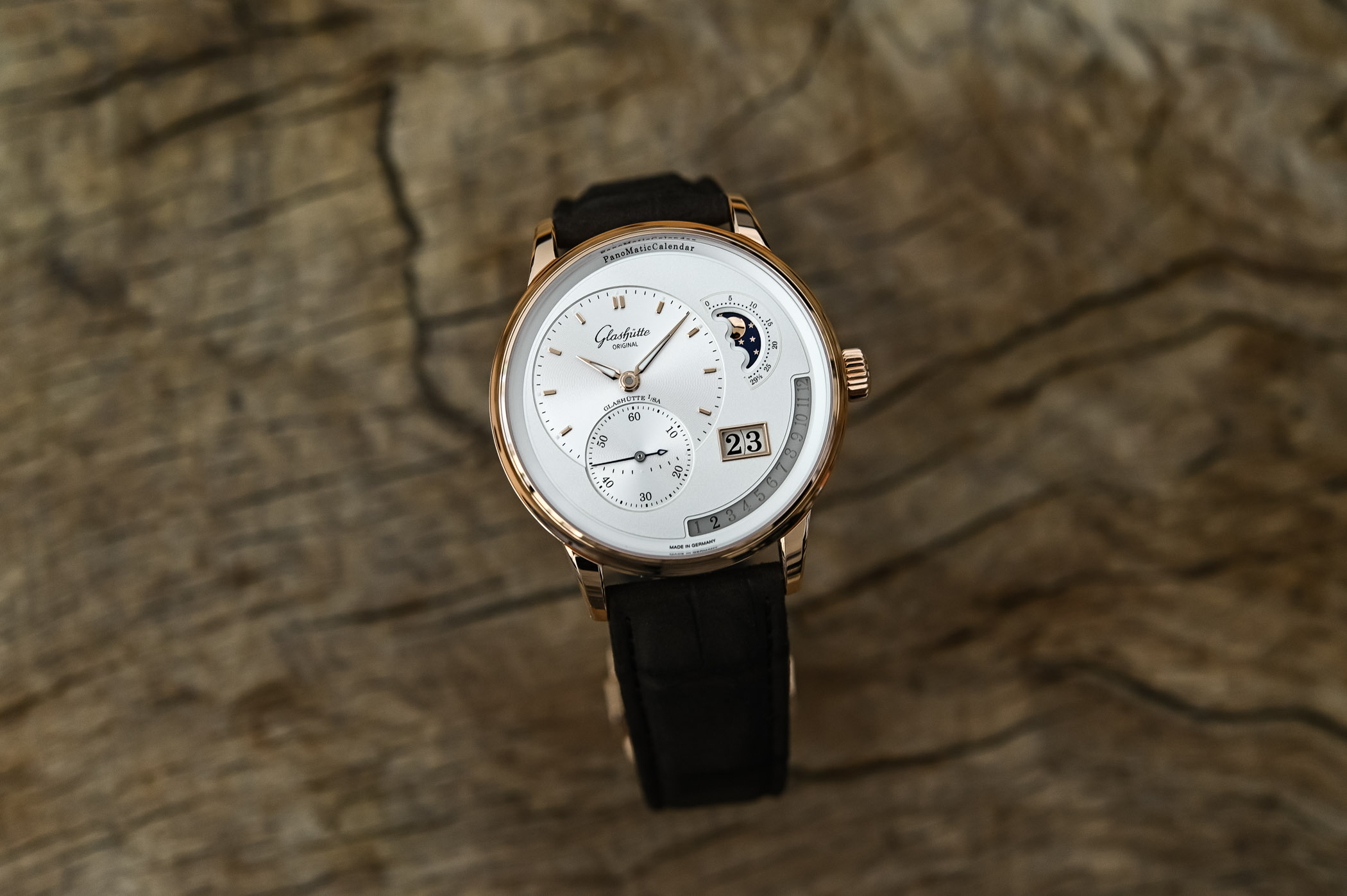
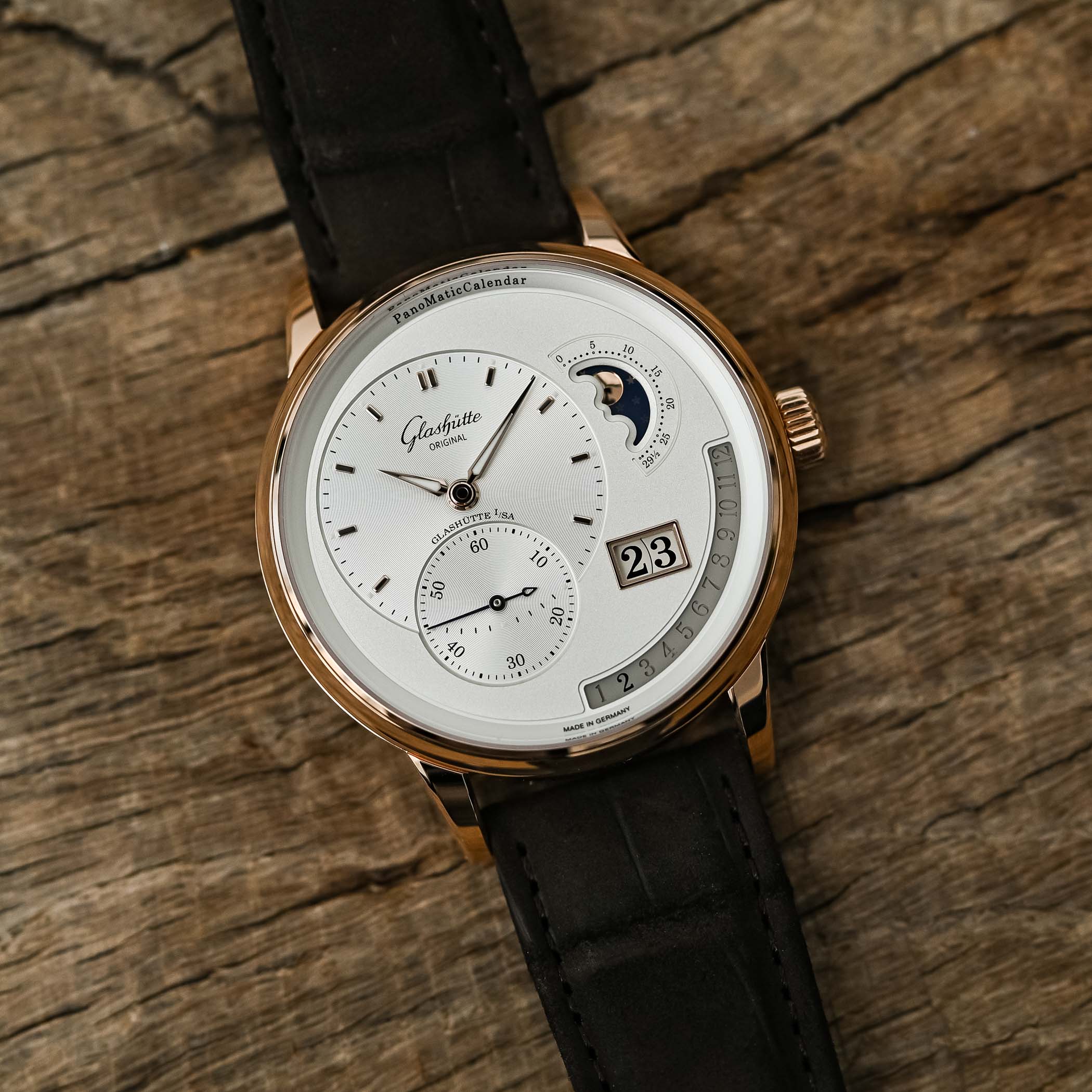

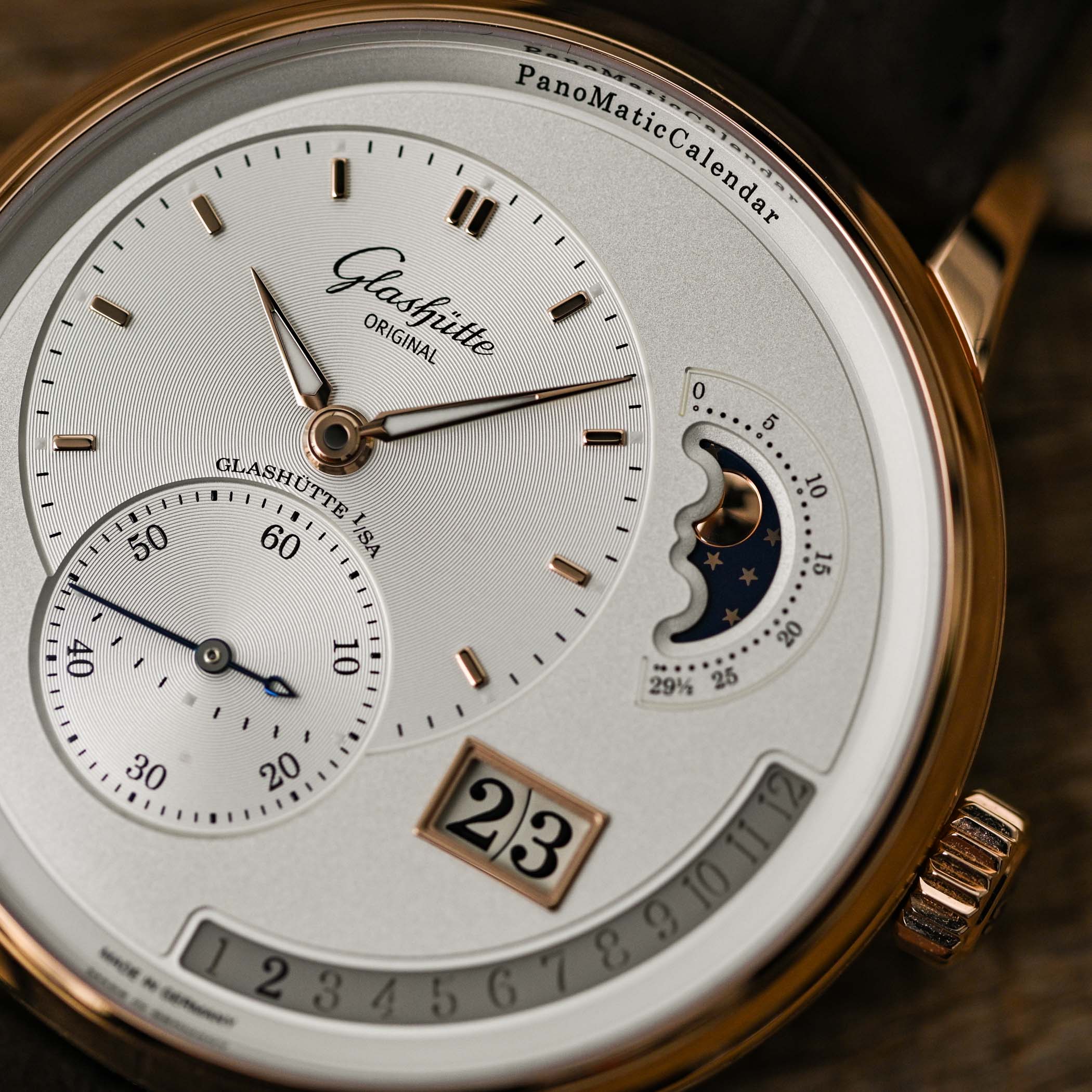
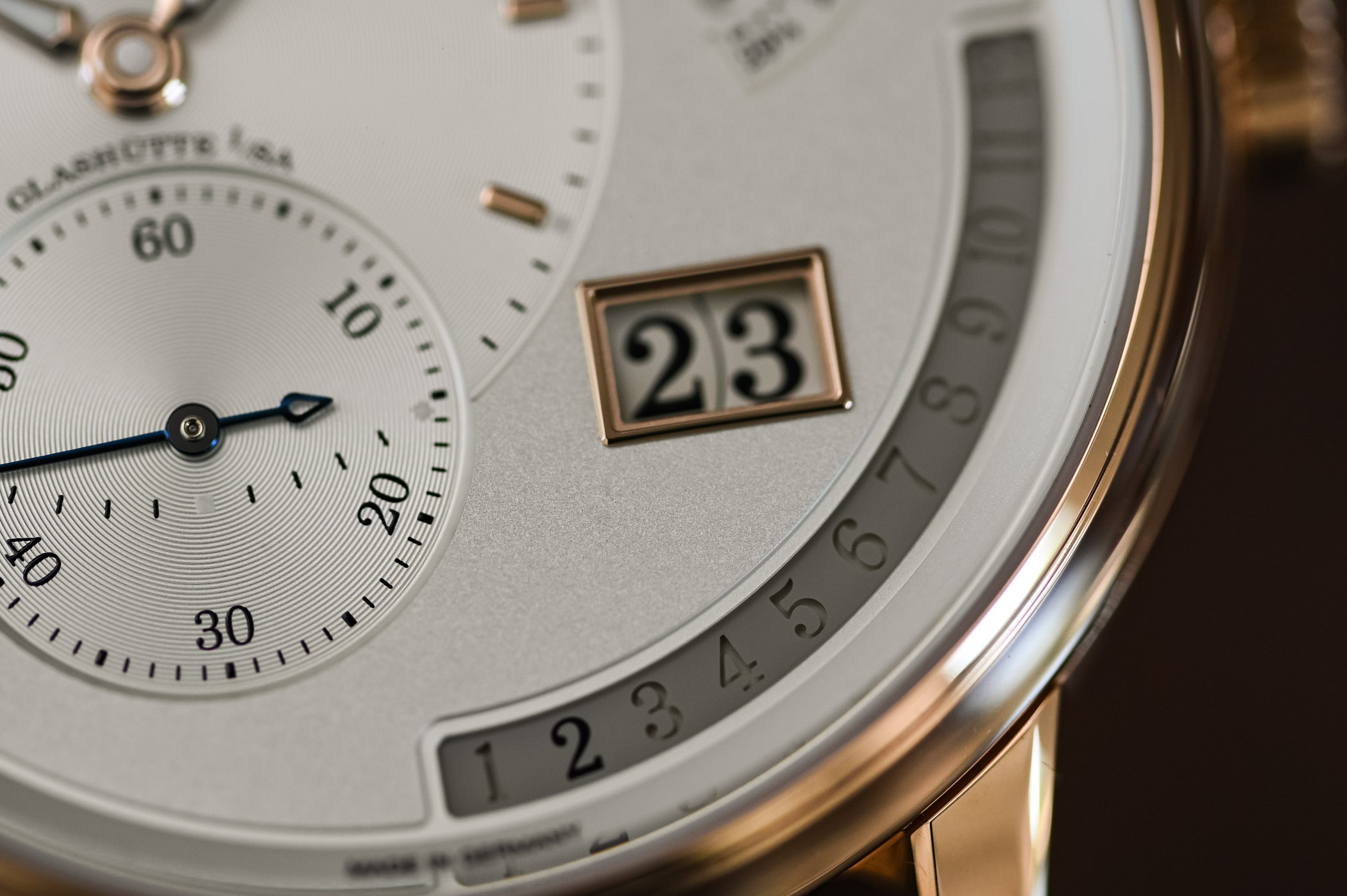
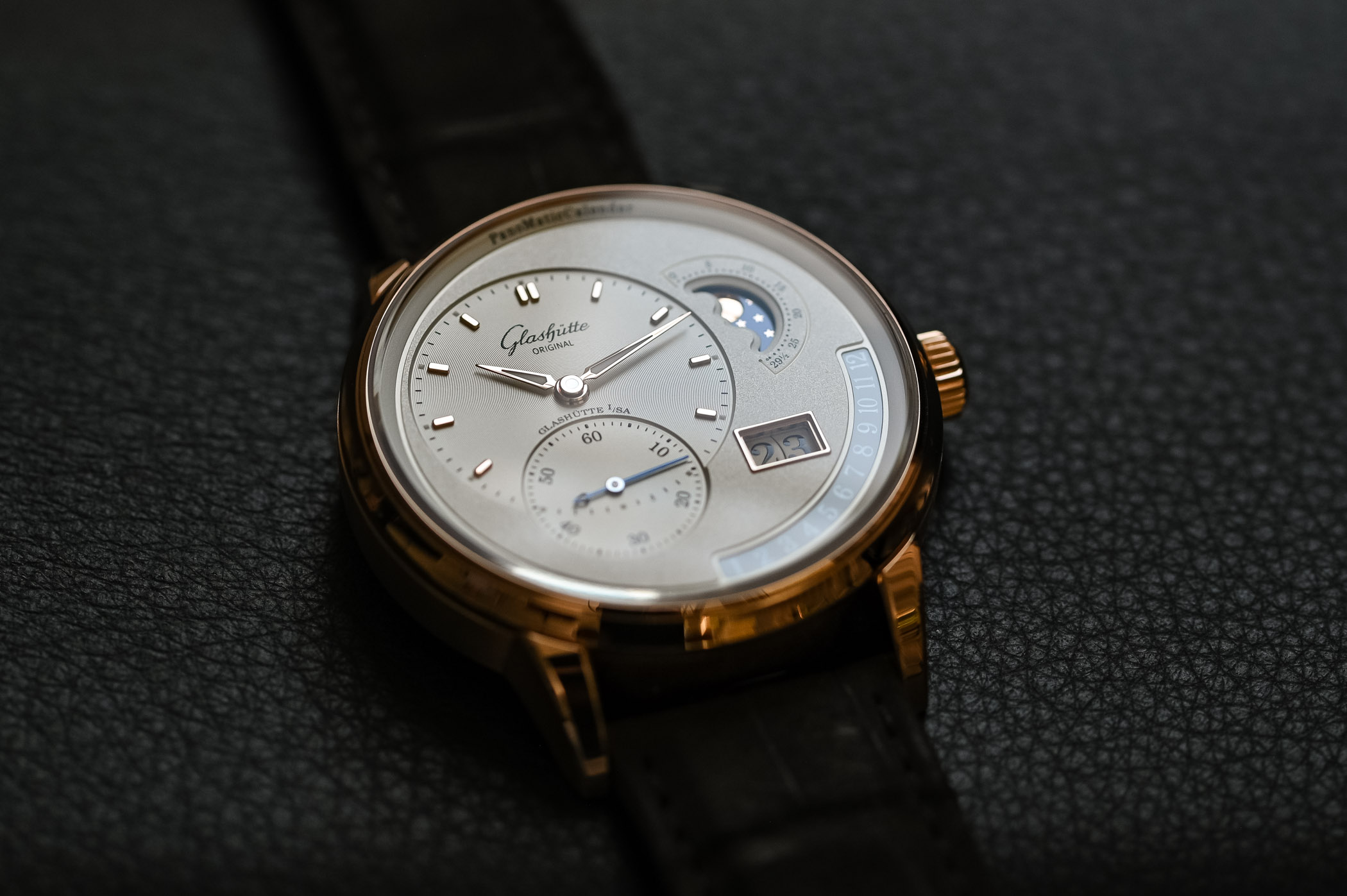
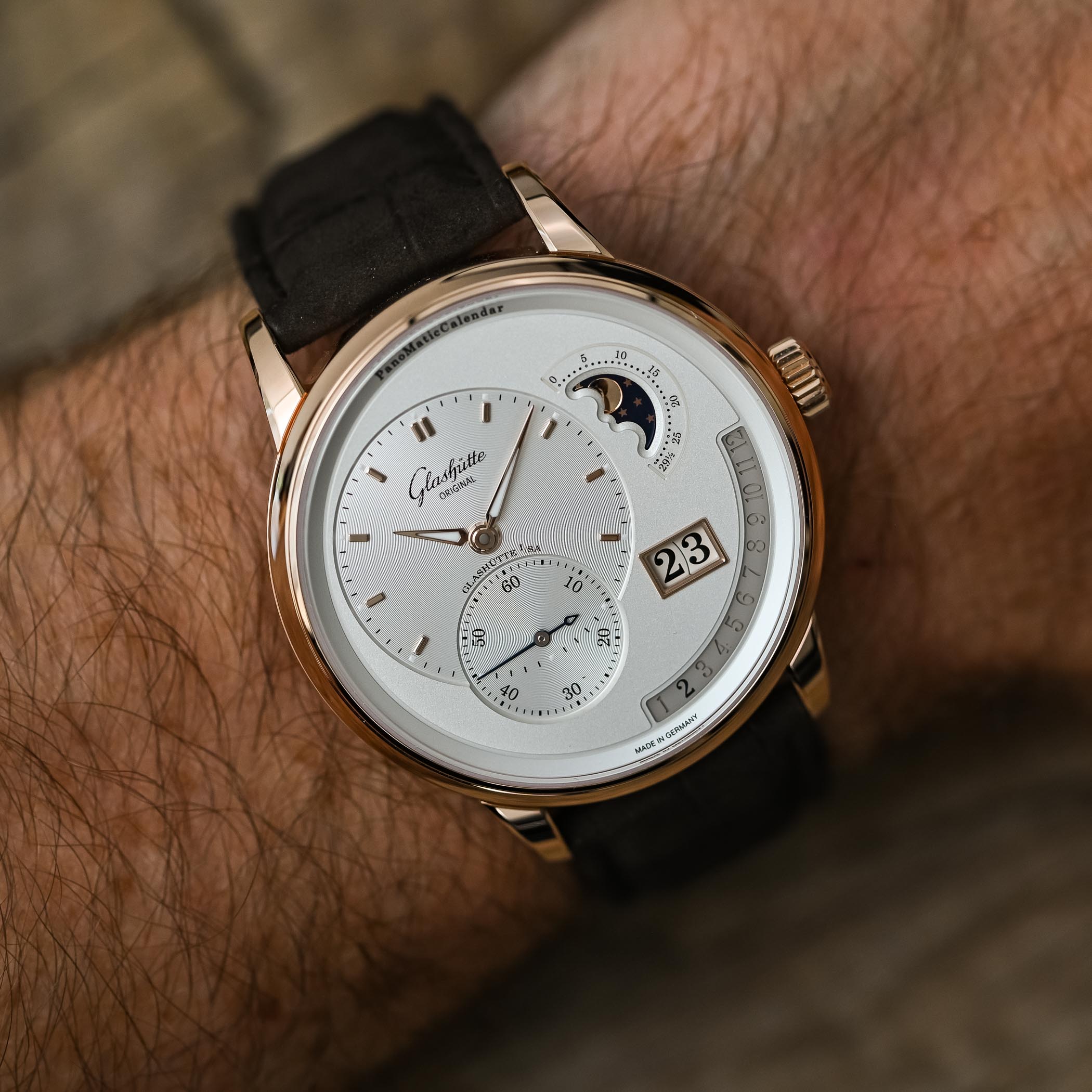
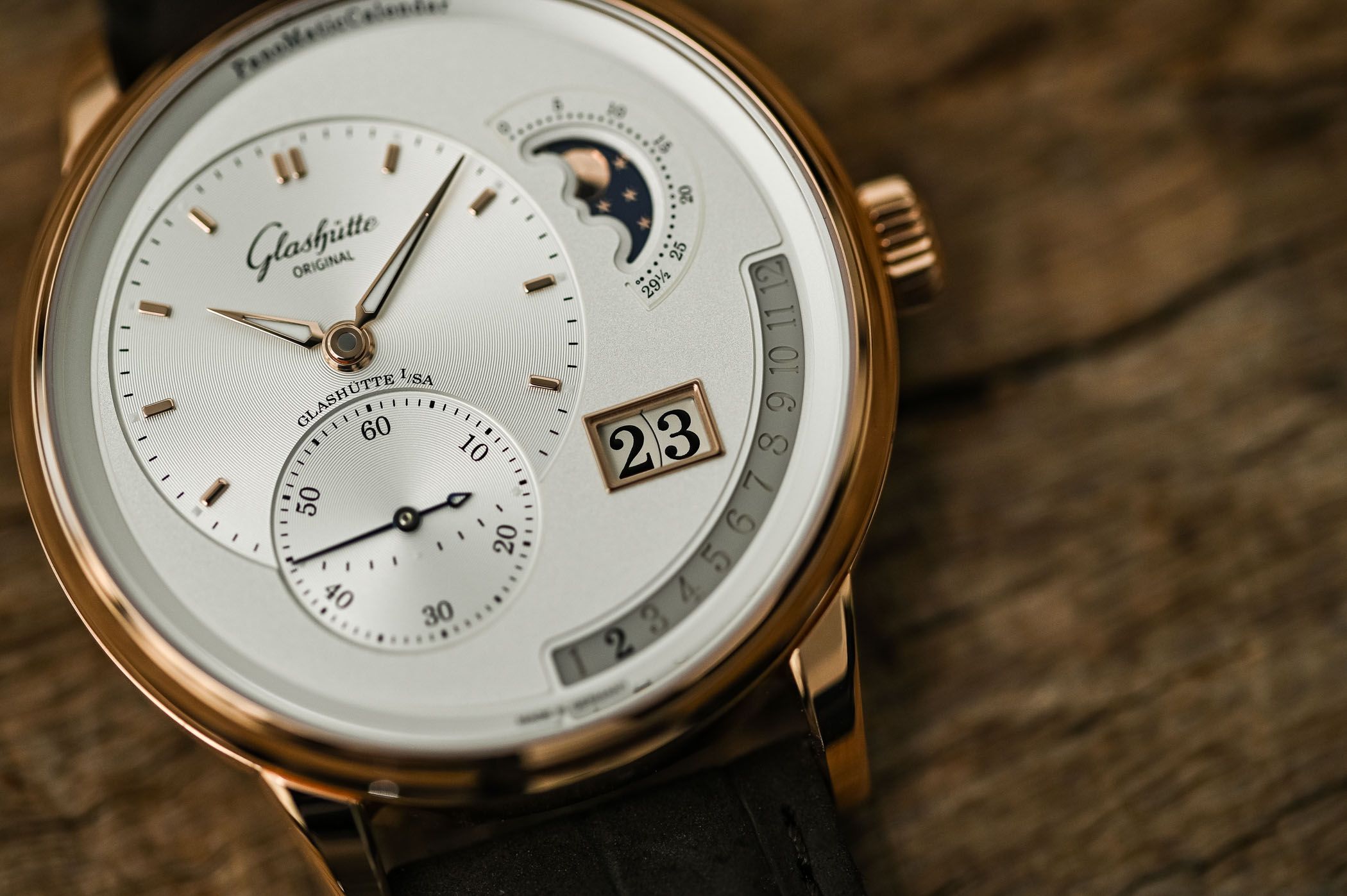
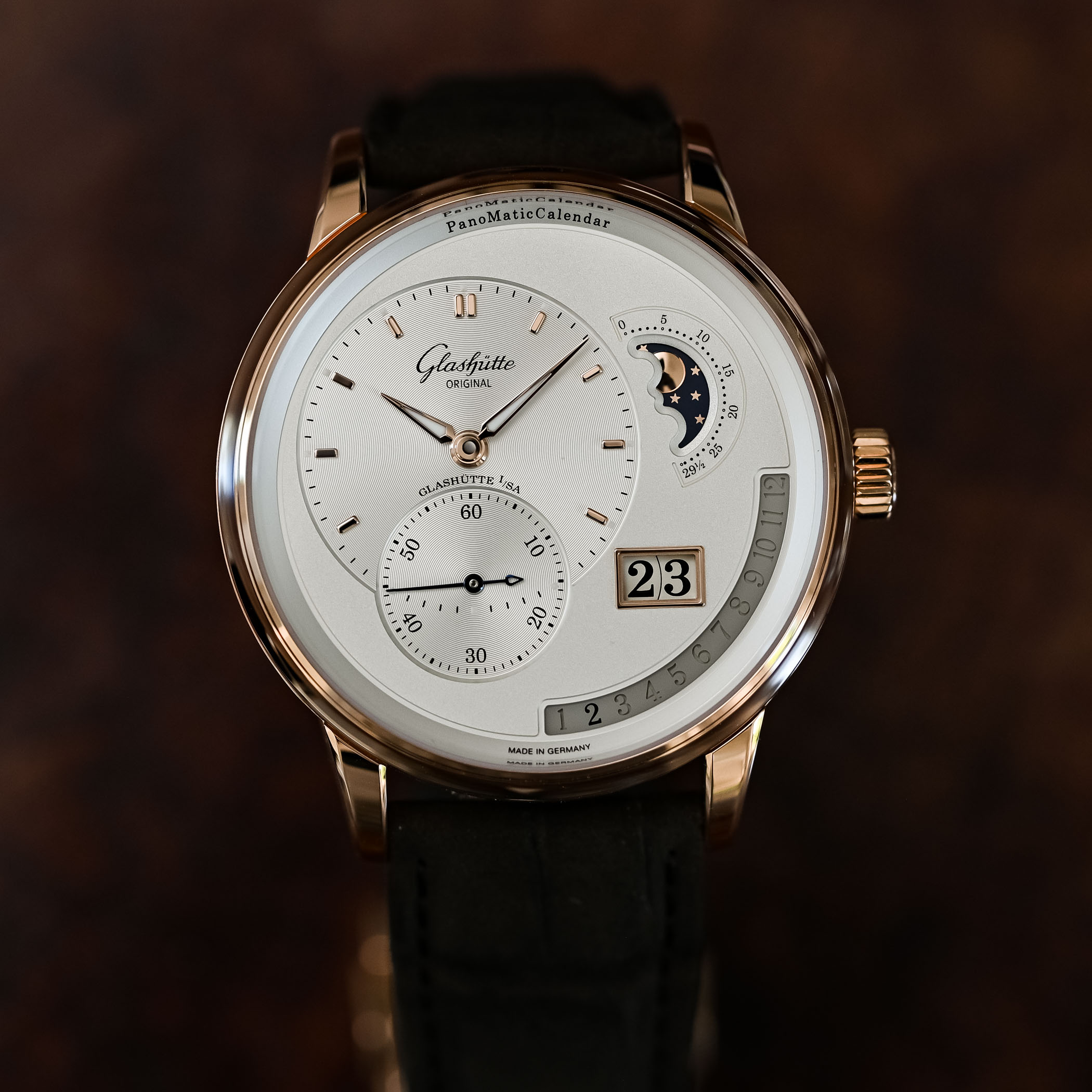
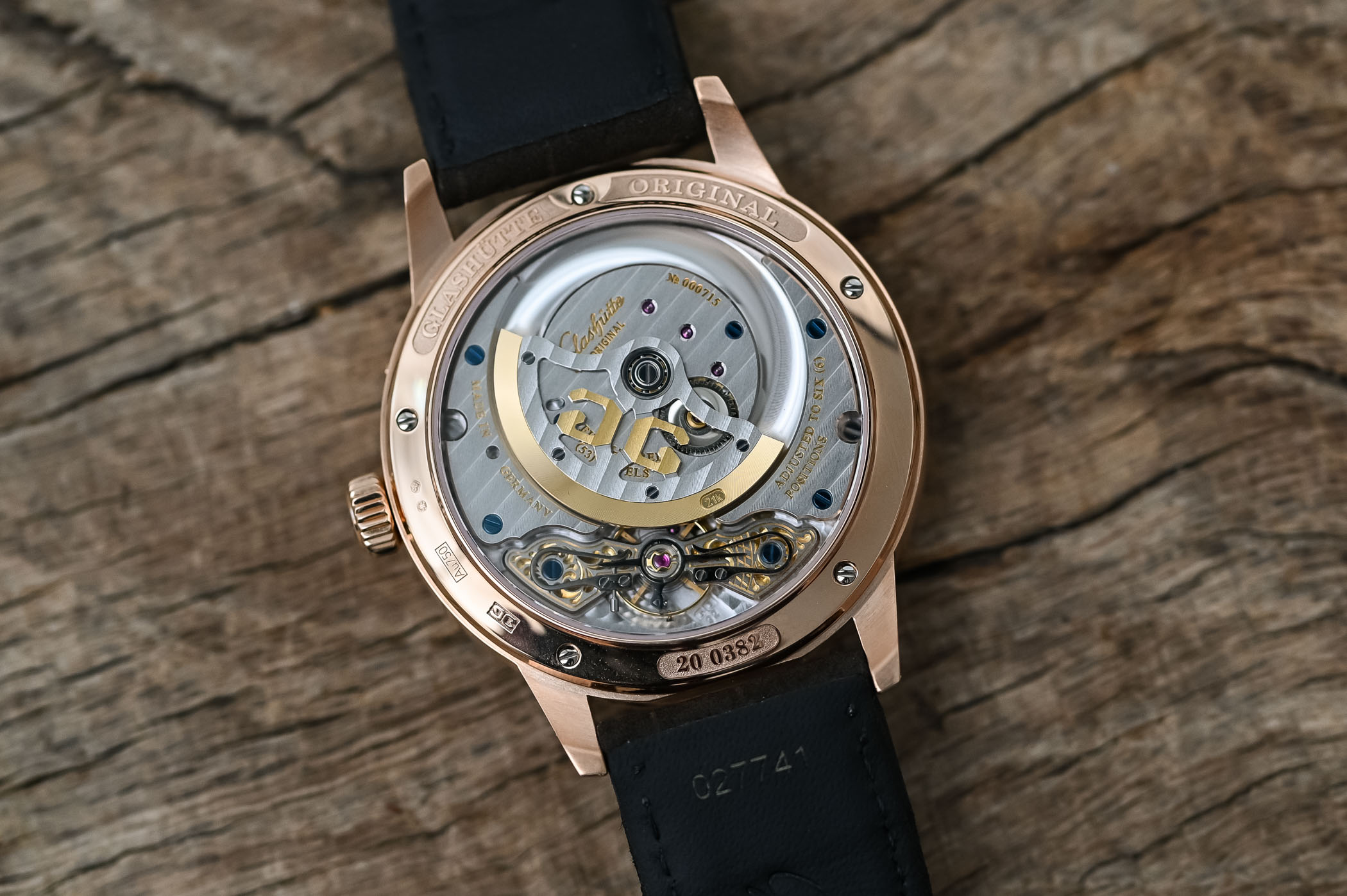

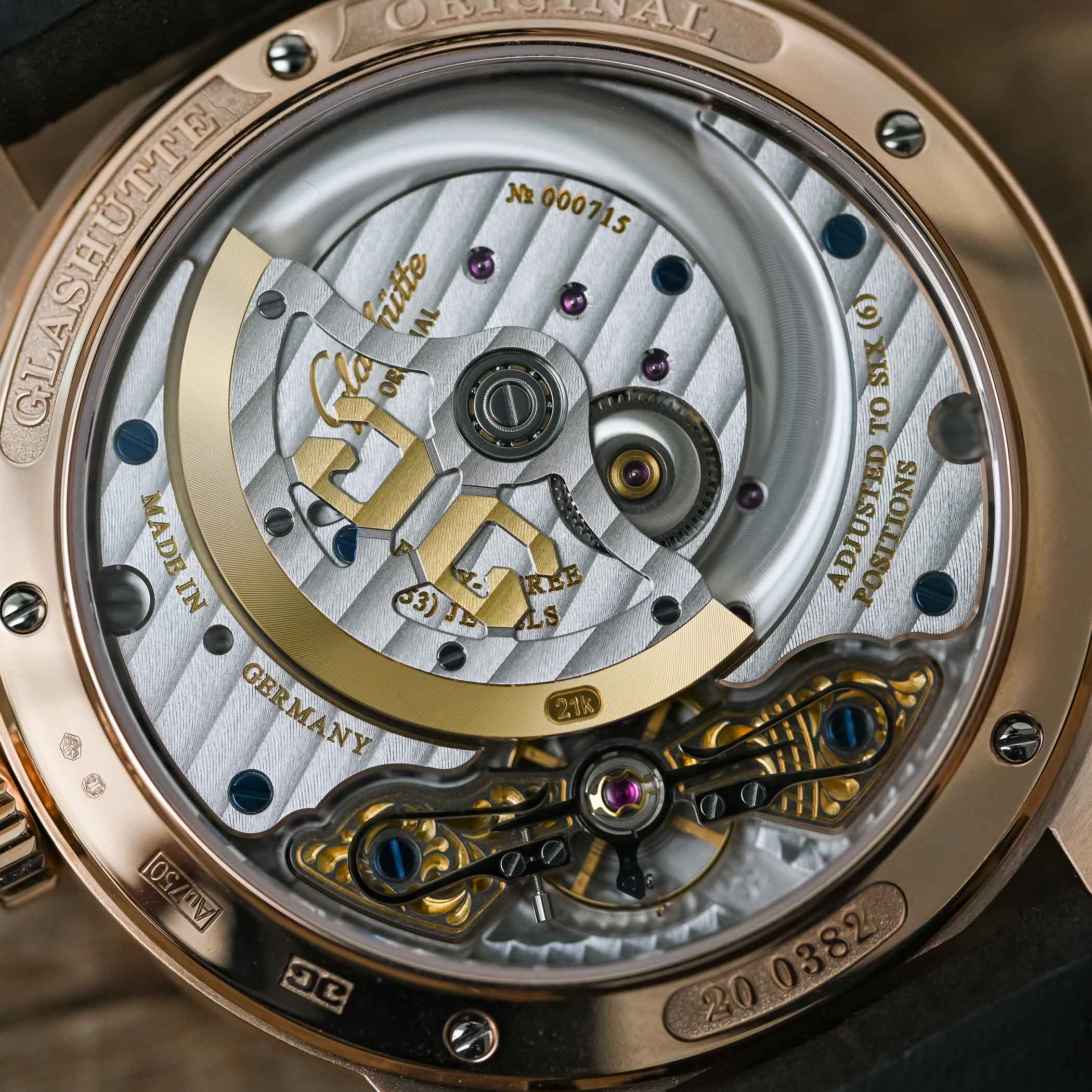



1 response
I have the pnoreserve but I feel almost sorry I can’t like this watch! The date is awful 😖